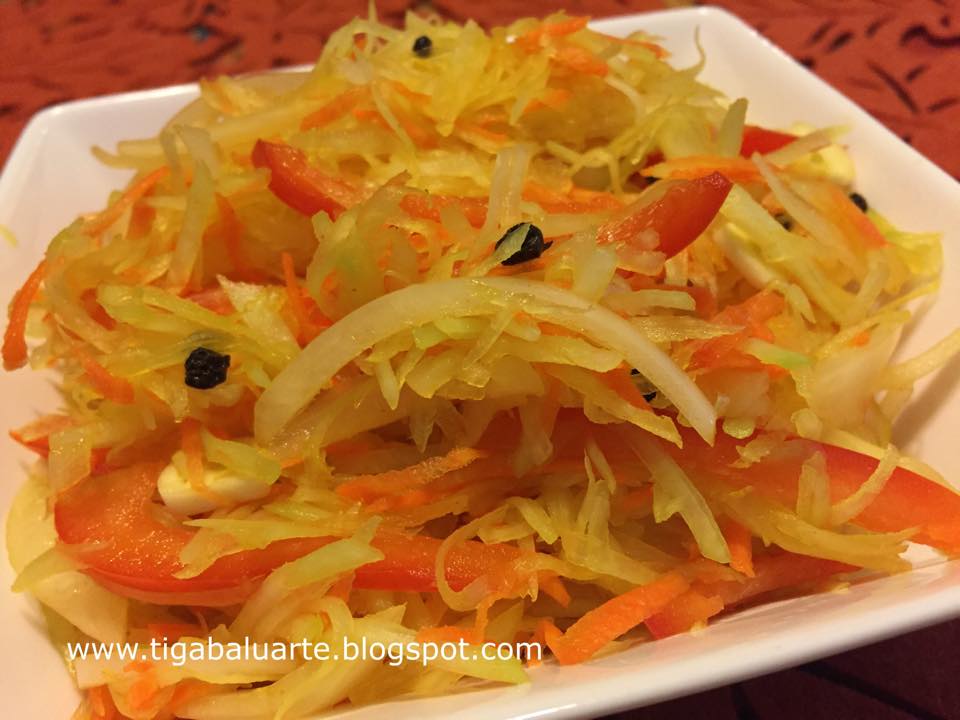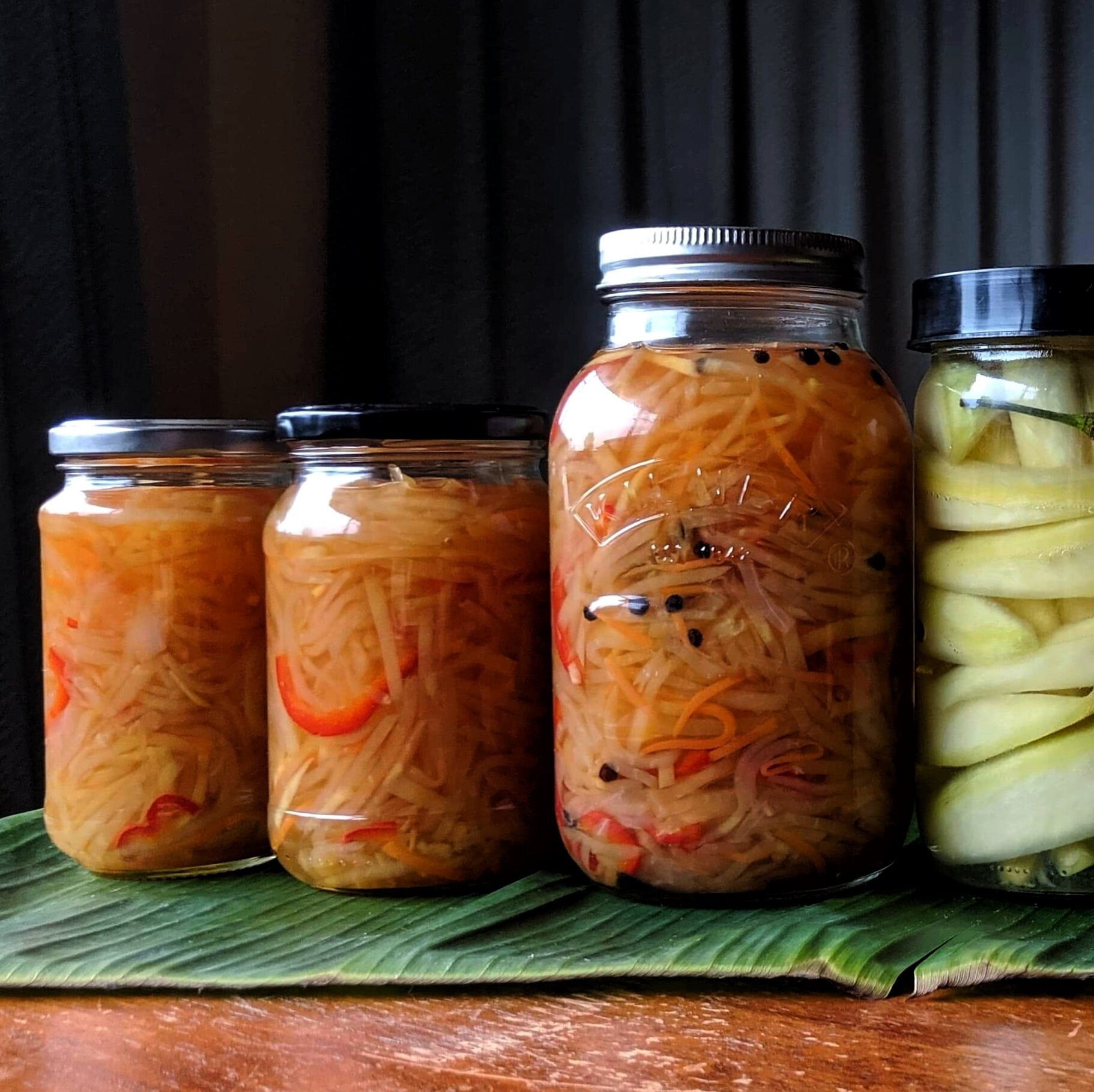Papaya vinegar is a unique and flavorful condiment that has gained popularity in recent years. Made from fermented papaya, this vinegar is not only delicious but also packed with potential health benefits.
In this article, we will guide you through the simple steps of making your own papaya vinegar at home. We will also explore its culinary applications and discuss its potential health benefits.
Introduction

Papaya vinegar is a culinary ingredient that has gained popularity due to its unique flavor and potential health benefits. It is made from fermented papaya fruit and vinegar, resulting in a tangy and slightly sweet liquid.
Papaya vinegar is not only a versatile ingredient that can enhance the flavor of various dishes, but it also possesses nutritional value. It is a good source of vitamins, minerals, and antioxidants, making it a healthy addition to any diet.
Nutritional Value
Papaya vinegar is a rich source of vitamins, including vitamin C, vitamin A, and vitamin E. These vitamins are essential for maintaining a healthy immune system, promoting healthy skin and vision, and protecting against oxidative damage.
It also contains minerals such as potassium, calcium, and magnesium, which are important for maintaining electrolyte balance, supporting bone health, and regulating muscle function.
Ingredients and Equipment
Crafting papaya vinegar requires a specific set of ingredients and equipment to ensure optimal results. Understanding the necessary components will help you prepare this delicious and versatile condiment with ease.
Ingredients
The primary ingredient for papaya vinegar is ripe papaya. Choose papayas that are fully ripe, with a vibrant orange flesh and a sweet aroma. Other essential ingredients include:
- Sugar: Granulated sugar provides nourishment for the vinegar-producing bacteria.
- Water: Clean water dilutes the vinegar to a palatable strength.
- Optional: Spices or herbs, such as ginger, turmeric, or cinnamon, can enhance the flavor profile of the vinegar.
Equipment
To make papaya vinegar, you will need the following equipment:
- Glass jar or container: A clean glass jar with a lid is ideal for storing the vinegar during fermentation.
- Cheesecloth or a clean cloth: This is used to cover the jar and allow air circulation while preventing contamination.
- Measuring cups and spoons: Accurate measurement of ingredients is crucial for the success of the fermentation process.
- Funnel: A funnel helps transfer the vinegar from the fermentation jar to a storage bottle.
- pH strips (optional): These strips can help monitor the acidity of the vinegar during fermentation.
Step-by-Step Recipe
Crafting papaya vinegar is a culinary endeavor that requires patience and precision. The process involves meticulous preparation, careful mixing, and extended fermentation to yield a tangy and aromatic condiment.
To embark on this culinary journey, follow these step-by-step instructions:
Preparing the Papaya
Select ripe papayas with vibrant yellow or orange flesh. Peel and remove the seeds, then slice the flesh into thin strips or cubes. This will facilitate the extraction of flavors and enzymes during fermentation.
Mixing the Ingredients
In a large glass or ceramic container, combine the sliced papaya with raw, unfiltered apple cider vinegar. The ratio of papaya to vinegar should be approximately 1:1 by volume. Add additional spices or herbs, such as ginger, garlic, or chili peppers, to enhance the flavor profile.
Fermentation Process
Cover the container with a clean cloth or paper towel and secure it with a rubber band. Place the container in a warm, dark location, such as a pantry or cupboard. The fermentation process will begin within a few days, characterized by the formation of bubbles and a slightly sour aroma.
Aging and Storage
Allow the papaya vinegar to ferment for several weeks to several months, depending on the desired intensity of flavor. The longer the fermentation period, the more pronounced the sourness will become. Once the desired flavor is achieved, strain the vinegar into a clean glass bottle and store it in a cool, dark place.
The vinegar will continue to age and develop complexity over time.
Variations and Flavorings
Experiment with different herbs, spices, and fruits to create unique papaya vinegar flavors. Add basil, mint, or rosemary for a refreshing twist. Experiment with spices like cinnamon, cloves, or ginger for a warm and aromatic flavor. Incorporate fruits like pineapple, mango, or passion fruit for a tropical touch.
Adjusting the Flavor Profile
Tailor the flavor profile to your liking by adjusting the proportions of ingredients. Add more papaya for a sweeter vinegar, or reduce it for a more tart flavor. Balance the sweetness and acidity by adding honey or sugar to taste.
For a spicy kick, add a pinch of chili flakes or jalapeño.
Culinary Applications
Papaya vinegar’s tangy and fruity flavor profile makes it a versatile ingredient in various culinary applications.
As a marinade, it tenderizes meats and infuses them with a unique blend of acidity and sweetness. Its natural enzymes help break down proteins, resulting in juicy and flavorful dishes.
Dressings and Sauces
- Emulsify papaya vinegar with olive oil to create a light and tangy salad dressing.
- Combine it with mayonnaise, yogurt, or sour cream for a flavorful dip or spread.
- Reduce it with honey or maple syrup to make a sweet and sour glaze for grilled or roasted dishes.
Condiment
- Add a splash to stir-fries, curries, or stews for a burst of acidity and complexity.
- Use it as a flavorful drizzle over salads, tacos, or grilled vegetables.
- Mix it with soy sauce or fish sauce for a unique dipping sauce for sushi or dumplings.
Health Benefits

Papaya vinegar has numerous potential health benefits, making it a valuable addition to a healthy diet. It is rich in antioxidants, enzymes, and vitamins that can support various bodily functions.
Improved Digestion
Papaya vinegar contains papain, an enzyme that helps break down proteins and improve digestion. It can alleviate symptoms of indigestion, such as bloating, gas, and heartburn. Additionally, the vinegar’s acidity stimulates gastric juices, further aiding in digestion.
Boosted Immunity
Papaya vinegar is rich in vitamin C, a potent antioxidant that supports the immune system. It helps protect the body against infections and diseases by strengthening the immune cells. Moreover, the vinegar’s antibacterial properties can inhibit the growth of harmful bacteria.
Reduced Inflammation
Papaya vinegar contains anti-inflammatory compounds, such as bromelain and papain. These compounds can help reduce inflammation throughout the body, potentially alleviating conditions like arthritis, gout, and inflammatory bowel disease.
Storage and Shelf Life
To maintain the optimal quality and flavor of papaya vinegar, proper storage conditions are crucial. It should be stored in a cool, dark place away from direct sunlight. The ideal temperature range is between 50°F (10°C) and 60°F (16°C). Airtight glass containers are recommended to prevent oxidation and preserve the vinegar’s integrity.
Shelf Life
When stored under the recommended conditions, papaya vinegar can have an extended shelf life of up to 2 years. However, factors such as temperature fluctuations, exposure to light, and contamination can affect its longevity. Refrigeration can further prolong the shelf life, extending it to up to 5 years or more.
Troubleshooting
Making papaya vinegar is a straightforward process, but there are a few common issues that may arise. Here are some tips to help you troubleshoot and resolve these issues effectively.
If you encounter any difficulties, it’s always helpful to consult with experienced vinegar makers or refer to reliable resources for additional guidance.
Slow or No Fermentation
- Insufficient sugar content: Papayas are naturally low in sugar, so it’s essential to add additional sugar to the mixture to feed the yeast and initiate fermentation. Use a hydrometer to measure the sugar content and adjust as needed.
- Lack of yeast: Ensure you have added enough yeast to the mixture. The yeast is responsible for converting the sugar into alcohol and acetic acid, which are the main components of vinegar.
- Temperature fluctuations: Yeast thrives in warm temperatures between 70-80°F (21-27°C). If the temperature is too low or too high, the yeast will not be able to ferment properly.
Closure
Making papaya vinegar at home is a rewarding experience that allows you to create a delicious and versatile condiment. With its unique flavor and potential health benefits, papaya vinegar is a valuable addition to any kitchen.
Questions and Answers
How long does it take to make papaya vinegar?
The fermentation process for papaya vinegar typically takes around 2-4 weeks. However, the aging process can take several months or even years, depending on your desired flavor profile.
Can I use other fruits to make vinegar?
Yes, you can use other fruits to make vinegar. Some popular options include apples, pineapples, and berries. The fermentation process is similar for all fruits, but the flavor of the vinegar will vary depending on the fruit used.
How do I store papaya vinegar?
Store papaya vinegar in a cool, dark place. A pantry or cupboard is a good option. Once opened, papaya vinegar should be refrigerated and used within a few months.
